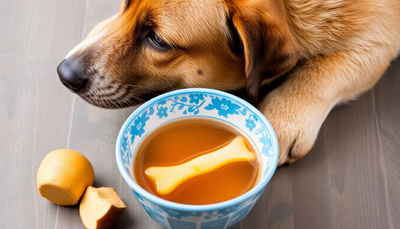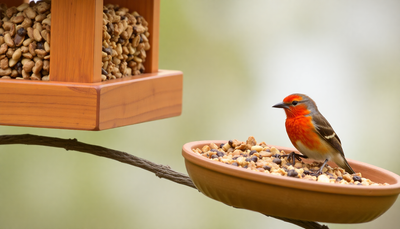The Importance of Choosing the Best Fish Food

When it comes to keeping our aquatic friends happy and healthy, choosing the best fish food is crucial. A balanced and nutritious diet not only enhances the vibrancy of our fish but also supports their overall well-being. In this guide, we will explore the top options for fish food that can help your underwater companions thrive. From flakes to pellets, frozen to live food, the choices may seem overwhelming, but understanding the specific needs of your fish species is key to making the right selection. Whether you have freshwater or saltwater fish, carnivores or herbivores, there is a perfect food option tailored to meet their dietary requirements. Join us as we dive into the world of fish nutrition and discover the best fish food products that will keep your fish healthy, happy, and displaying their most vibrant colors.
Selecting Premium Fish Food
When it comes to providing the best care for your aquatic pets, selecting premium fish food is a crucial decision. Here are some key points to consider when choosing the right food for your fish:.
-
Quality of Ingredients: Opt for fish food that contains high-quality ingredients. Look for options that list whole fish or seafood as the primary ingredients, as these provide essential nutrients for your fish.
-
Nutritional Content: Ensure that the fish food you choose is nutritionally balanced. Look for foods that are rich in proteins, vitamins, and minerals to support the overall health and well-being of your fish.
-
Tailored Options for Different Fish Species: Different fish species have varying dietary requirements. Choose fish food that is specially formulated for the specific species you are caring for to meet their nutritional needs.
-
Consideration of Fish Feeding Habits: Take into account the feeding habits of your fish when selecting food. Some fish may prefer pellets, while others may thrive on flakes or frozen options. Consider the size of the food particles to ensure they are suitable for your fish's mouth size.
When it comes to selecting premium fish food for your aquatic pets, it is essential to delve deeper into the factors that contribute to the overall health and well-being of your fish. Quality of ingredients plays a pivotal role in ensuring that your fish receive the necessary nutrients for growth and vitality. Opting for fish food that contains natural ingredients without fillers or artificial additives can significantly impact the health of your fish.
In addition to quality ingredients, the nutritional content of the fish food is crucial. A well-balanced diet rich in proteins, vitamins, and minerals is essential for supporting the immune system, enhancing color vibrancy, and promoting healthy growth in fish. Look for fish food that offers a complete diet to meet all the nutritional needs of your aquatic pets.
Furthermore, tailored options for different fish species are key in providing specialized nutrition. Cichlids, bettas, goldfish, and tetras, among other species, have specific dietary requirements. Choosing fish food that caters to the unique needs of your fish ensures that they receive the right balance of nutrients to thrive.
When considering fish feeding habits, it is essential to observe how your fish consume their food. Some fish are surface feeders, while others prefer food that sinks to the bottom of the tank. Understanding your fish's feeding behavior can help you select the appropriate food type and size to prevent overfeeding or underfeeding.
By carefully evaluating the quality of ingredients, nutritional content, tailored options for different fish species, and fish feeding habits, you can make an informed decision when selecting premium fish food for your beloved aquatic pets. Remember, a well-fed fish is a healthy fish, so choose wisely to promote the longevity and vibrancy of your underwater companions.
Exploring Fish Food Varieties
Benefits of Flakes
Flakes have been a staple in the fish food industry for their convenience and variety. They offer a balanced diet and are suitable for a wide range of fish species. Flake foods are easy to store and have a long shelf life, making them a convenient choice for many fish owners. Additionally, they come in various formulas tailored to specific needs such as color enhancement, growth, or specific species requirements.
Convenience of Pellets
Pellets are another popular choice due to their ease of use and ability to sink at different speeds, catering to fish that feed at various levels of the tank. With pellets, you can control the portion size more effectively, reducing the risk of overfeeding. Some pellets are formulated to float, ideal for top-feeding fish, while others sink slowly, providing food for bottom-dwellers.
Nutritional Advantages of Freeze-Dried Treats
Freeze-dried treats are known for their high nutritional value and long shelf life. They are a great option for providing occasional treats to your fish. Freeze-dried foods retain much of their original nutritional content, offering a healthy snack alternative for your aquatic pets. Some freeze-dried options include bloodworms, brine shrimp, and daphnia.
Natural Diet with Live Food
Live food, such as brine shrimp or bloodworms, mimic a fish's natural diet. They are rich in proteins and can be a great source of enrichment for your fish. Live foods can be especially beneficial for picky eaters or fish that require higher protein intake. However, it's essential to ensure the live food is from a reliable source to prevent introducing diseases to your aquarium.
Alternative Choices like Gel Food
Gel food is a relatively newer option in the market, offering a customizable diet for your fish. It can be enriched with vitamins and minerals to suit specific dietary needs. Gel foods can be particularly useful for fish with dietary restrictions or those that prefer softer textures. Additionally, they can be easily customized with added supplements such as garlic for its antibacterial properties or probiotics for digestive health.
Exploring fish food varieties allows you to provide a diverse and balanced diet for your aquatic pets. By incorporating a mix of flakes, pellets, freeze-dried treats, live food, and gel options, you can cater to different nutritional requirements and feeding preferences within your aquarium community.
Top Brands for Fish Food
When it comes to choosing the best fish food for your aquatic pets, the brand you select can make a significant difference in their health and overall well-being. In this section, we will explore some of the top brands that have gained popularity among fish enthusiasts worldwide.
Brand A: Features and Benefits
Brand A has established itself as a leader in providing high-quality fish food that meets the nutritional needs of a wide range of fish species. Their products are known for containing essential vitamins and minerals that promote vibrant colors, healthy growth, and overall vitality in fish. Moreover, Brand A offers a diverse range of food options, including flakes, pellets, and freeze-dried treats, catering to various dietary preferences.
Brand B: Unique Selling Points
Brand B sets itself apart from competitors through its innovative formulations that address specific dietary requirements of different fish species. They have developed specialized food formulas enriched with probiotics, immune-boosting ingredients, and natural color enhancers to support optimal health in fish. Additionally, Brand B emphasizes sustainability by sourcing premium ingredients from eco-friendly suppliers, ensuring both quality and environmental responsibility.
Popular Choices from Brand C
Brand C has gained a loyal following among fish keepers for its affordable yet high-quality fish food offerings. Their products are widely praised for striking a balance between nutrition and value, making them accessible to a broad spectrum of hobbyists. Some of the popular choices from Brand C include tropical fish flakes, sinking pellets for bottom feeders, and algae wafers for herbivorous species.
Brand D: Specialty for Specialty Fish
Brand D is renowned for its specialty fish food catering to unique fish species such as discus, cichlids, and bettas. Their formulas are carefully crafted to meet the specific dietary requirements of these exotic fish, ensuring optimal health and vibrant colors. Brand D's products are often enriched with ingredients like spirulina, krill, and other natural enhancers tailored to the distinct needs of specialty fish.
Brand E: Health and Wellness Range
Brand E focuses on promoting fish health and wellness through its premium food range. Their products are formulated with high-quality proteins, essential fatty acids, and immune-boosting additives to enhance fish immunity and overall well-being. Brand E's health and wellness range include options for freshwater and marine fish, providing a comprehensive nutritional solution for a diverse range of aquatic species.
Selecting the right fish food brand is crucial for maintaining the health and happiness of your aquatic companions. By considering the features, benefits, and unique selling points of different brands, you can make an informed decision that supports the well-being of your fish. Remember to assess your fish's dietary needs and preferences when choosing a brand, and always prioritize quality and nutrition above all else.
Homemade Fish Food Recipes
Simple and Nutritious Recipe
In this section, we will explore a simple and nutritious recipe perfect for your fish companions. Creating homemade fish food ensures that your aquatic pets receive a diet tailored to their specific needs, promoting their health and vitality. We will emphasize the importance of using fresh, high-quality ingredients to provide a well-rounded meal rich in proteins, essential vitamins, and minerals. By following our recipe, you can enhance your fish's immunity and intensify the vibrant colors that make them so captivating.
Tailored Recipe for Specific Fish Needs
Each fish species has distinct nutritional requirements influenced by their natural diet and behaviors. Understanding these needs is crucial in preparing homemade fish food that meets the unique demands of your fish. Whether you care for herbivorous, carnivorous, or omnivorous fish, we will guide you in selecting the right ingredients and proportions to ensure your fish thrive. Our insights will help you customize recipes for freshwater, saltwater, or tropical fish, supporting their well-being in their respective environments.
Budget-Friendly Recipe Options
Maintaining a diverse aquarium can be costly, particularly with numerous or rare fish species that demand specific diets. To assist budget-conscious fish keepers, we present cost-effective homemade fish food recipes that utilize everyday kitchen staples and readily available ingredients. Our recipes not only help you save money but also guarantee that your fish receive the necessary nutrition. Discover innovative ways to repurpose leftovers and create nutritious meals that keep your fish healthy and content without burdening your budget.
Enhancing Your Fish's Diet
Apart from the recipes provided, consider supplementing your fish's diet with treats like live or frozen foods to mimic their natural foraging behaviors. Remember to feed appropriate portion sizes to prevent overfeeding and maintain water quality. Additionally, observe your fish's eating habits and adjust their diet as needed to ensure optimal health. By combining our homemade recipes with a balanced feeding regimen, you can contribute to the overall well-being and longevity of your aquatic companions.
Feeding Fish: Best Practices
Feeding fish is a crucial aspect of maintaining a healthy aquatic environment. Proper feeding practices not only ensure the well-being of your fish but also help in keeping the tank clean and balanced. Let's delve into the key points to consider for optimal fish feeding.
Importance of Portion Control
One of the fundamental aspects of fish feeding is portion control. Overfeeding can lead to various issues such as uneaten food sinking to the bottom of the tank, causing water quality problems. It's essential to feed your fish an amount they can consume within a few minutes to prevent overfeeding incidents.
Avoiding Overfeeding Incidents
Overfeeding is a common mistake among fish owners and can have detrimental effects on the aquarium ecosystem. Uneaten food decomposes, leading to ammonia spikes and algae blooms. By feeding small, frequent meals and observing how much your fish can eat in a short time, you can prevent overfeeding and maintain a healthy environment for your aquatic pets.
Observation of Post-Feeding Fish Behavior
After feeding your fish, take the time to observe their behavior. Healthy fish will be active, swimming around the tank and showing interest in their surroundings. If you notice fish that appear lethargic or bloated after feeding, it may be a sign of overfeeding or an underlying health issue. Monitoring your fish post-feeding can help you adjust their diet and detect any potential problems early on.
Establishing a Consistent Feeding Schedule
Consistency is key when it comes to feeding fish. Establishing a regular feeding schedule helps maintain a routine for your fish and prevents overfeeding incidents. Depending on the fish species, you may need to feed once or multiple times a day. Research the dietary needs of your specific fish and create a feeding schedule that suits their requirements.
The Right Type of Food
Choosing the right type of food is crucial for the health of your fish. Different species have varying dietary requirements, including herbivores, omnivores, and carnivores. Ensure you provide a balanced diet that meets the nutritional needs of your fish. You can opt for high-quality commercial fish food or supplement with live or frozen foods to enhance their diet.
Water Quality and Feeding
Water quality is closely linked to fish health. Poor water conditions can stress fish and make them more susceptible to diseases. When feeding your fish, be mindful of how food particles affect water quality. Remove any uneaten food promptly to maintain clean water and prevent ammonia spikes. Regular water testing and maintenance are essential for a healthy aquatic environment.
Feeding Techniques
Consider the feeding habits of your fish when determining the best feeding techniques. Some fish are surface feeders, while others prefer food sinking to the bottom. Adjust your feeding methods accordingly to ensure all fish receive their share of food. You can also use feeding rings or spot feeders to target specific fish or areas in the tank, reducing competition for food.
Conclusion
Proper feeding practices are vital for the overall well-being of your fish and the aquatic ecosystem. By implementing portion control, observing fish behavior, establishing a feeding schedule, choosing the right food, maintaining water quality, and using suitable feeding techniques, you can promote a thriving environment for your aquatic pets to thrive and flourish.
Conclusion
Choosing the right fish food is crucial for maintaining the health and vibrancy of your aquatic pets. By opting for high-quality, nutrient-rich options tailored to the specific dietary needs of your fish, you can ensure their overall well-being and enhance their colors and vitality. Remember to consider factors such as species, size, and dietary requirements when selecting the best fish food to keep your underwater companions happy and thriving.






